Unbanked Payment Fee Calculator
Why this matters: 88% of unbanked Americans also lack credit/debit cards. Alternative systems offer lower costs but higher fees than traditional banking.
Fee Comparison
Enter details to see comparison
Imagine needing to pay for groceries, send money to a family member, or cover an emergency repair-but you don’t have a bank account, debit card, or even a credit card. For 4.8% of U.S. adults, and over 1.7 billion people globally, this isn’t hypothetical. It’s daily life. And yet, they still pay. They don’t wait for a bank to approve them. They don’t fill out forms for a loan. They use payment systems that skip the bank entirely.
These aren’t sci-fi fantasies. They’re real, functional, and growing fast. From mobile money apps in Kenya to prepaid cards in rural Mississippi, payment systems without banking infrastructure are filling gaps that traditional finance never could. They don’t need your Social Security number. They don’t check your credit score. They just need your phone, your cash, and a trusted agent nearby.
How Do You Pay Without a Bank Account?
The biggest myth about alternative payment systems is that they’re all digital and online. They’re not. Most rely on a simple, old-school idea: cash in, digital out. This is called a cash-in/cash-out (CICO) network. You walk into a local corner store, gas station, or post office. You hand over $50 in cash. The clerk enters the amount into a tablet, and suddenly $50 shows up in your mobile wallet. You can now pay someone else via text, buy airtime, or even pay your rent online-all without touching a bank.
When you need cash again? You reverse the process. You tell the agent you want to withdraw $30. They give you bills. Your digital balance drops. No bank. No PIN. No login. Just trust between you and the local vendor.
This system works because it mirrors how cash works: immediate, anonymous, and offline. But unlike cash, it’s trackable, reusable, and can be sent across town-or across borders-in seconds. M-Pesa in Kenya is the most famous example. Launched in 2007, it now serves 83% of Kenyan adults. Not one of them needed a bank account to get started.
What About Digital Wallets Like PayPal?
PayPal often gets lumped in with these systems. But it’s not the same. PayPal still needs your bank account or credit card to fund your balance. You link your financial institution. PayPal just acts as a middleman. It hides your bank details from merchants. That’s useful-but it doesn’t solve the core problem: what if you don’t have a bank to link?
That’s where systems like PocketPass or Internet Dollar come in. These aren’t just payment apps. They’re private digital currencies. You buy codes-like gift cards-using cash. You enter the code online to add value. No bank. No identity verification. Just a string of numbers that holds value. It’s like buying a prepaid phone card, but for payments.
These systems are small, niche, and often unregulated. That’s why they’re risky. If the company disappears, your money vanishes. There’s no FDIC insurance. No recourse. But for someone who’s been locked out of the system, that risk feels smaller than the risk of being unable to pay rent.
The Hidden Tech: Offline Payments That Don’t Need the Internet
Most people think “offline payment” means you can pay without Wi-Fi. That’s true-but only partly. What most systems call “offline” is really delayed online. You tap your phone to a terminal. The transaction goes through. But it doesn’t settle until later, when the merchant’s device connects to the internet. That’s not true offline.
True offline payment systems don’t connect to any network at all. They use hardware-based security. One experimental model, called OPERA, stores payment tokens in a one-time readable memory chip inside your phone. You send a token to a merchant’s device via Bluetooth. The token is spent. It can’t be copied. It can’t be reversed. No server. No bank. No internet. Just math and hardware.
It sounds like science fiction. But labs in the U.S. and Europe are testing it. The challenge? Making it scalable. Making it cheap. Making sure the chip doesn’t break if you drop your phone. And most of all-making sure no one can fake a token. If you can copy a payment, you can steal money. That’s why most systems still rely on online checks.
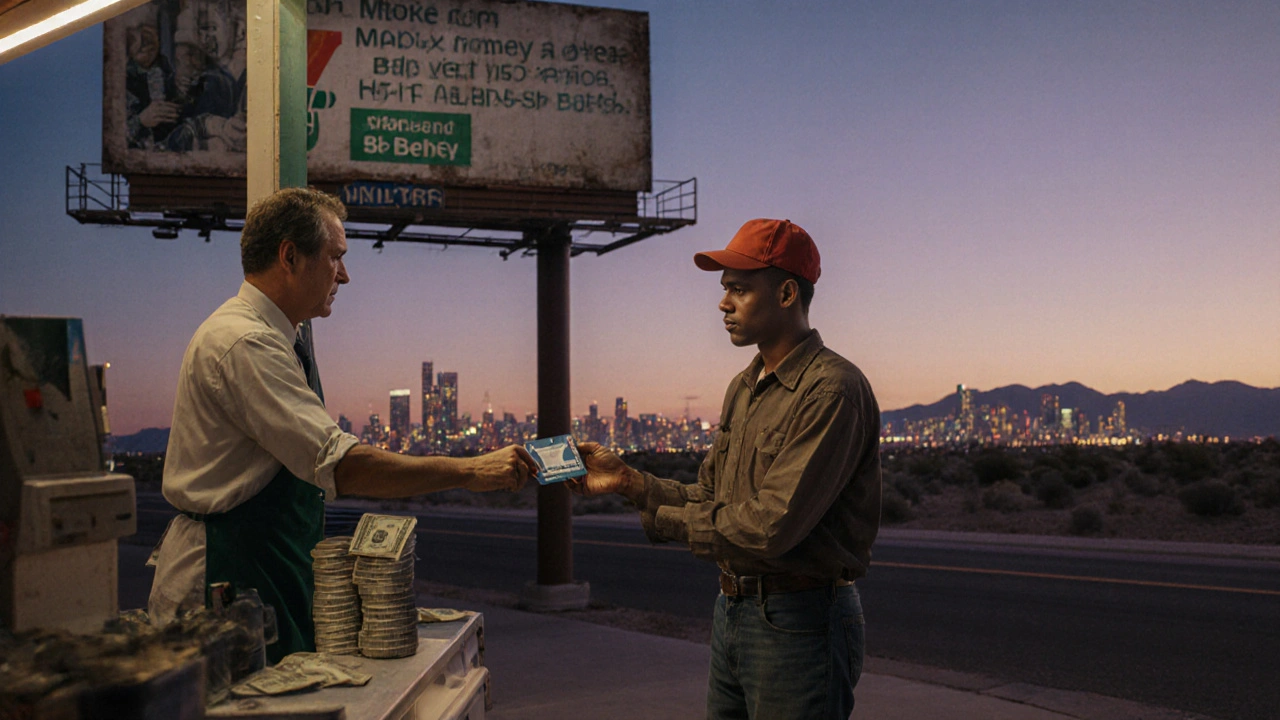
Who Uses These Systems-and Why?
It’s not just the poor. It’s not just the unbanked. It’s anyone who’s tired of delays, fees, and bureaucracy.
- A single mom in Detroit uses M-Pesa-style apps to send money to her sister in Jamaica. Wire transfers cost $45. This costs $2.
- A gig worker in Phoenix gets paid in digital tokens from clients who don’t use direct deposit. He cashes out at a 7-Eleven.
- An elderly man in rural Alabama can’t use online banking. But he can hand his grandson $20 cash to load onto his phone. Now he pays his utility bill by voice command.
The Federal Reserve found that 88% of Americans without bank accounts also don’t have credit or debit cards. That’s 14.4% of low-income households. These people aren’t choosing to be excluded. They’ve been excluded. And now, they’re building their own financial tools.
The Fees Are High-but So Is the Cost of Doing Nothing
Yes, converting cash to digital money costs money. In Mississippi, researchers found average fees of 3.8% per cash-in transaction. That’s $3.80 for every $100. It hurts. But compare that to the alternatives: check-cashing stores charge 5-10%. Payday lenders charge 400% APR. Overdraft fees hit $35 per transaction.
For many, the 3.8% fee isn’t a cost. It’s insurance. It’s access. It’s dignity. It’s not being forced to wait two days for a check to clear. It’s not being turned away from a landlord because you can’t pay with a card.
And here’s the twist: as these systems grow, fees drop. Why? Competition. More agents. More tech. More users. In Kenya, M-Pesa fees fell by over 60% in 10 years as adoption soared. That’s the power of scale.

Why Don’t Banks Just Fix This?
Banks could offer free basic accounts. They could let people pay with cash at ATMs. They could partner with local stores. But they don’t. Why? Because it’s not profitable.
Banking the unbanked means low balances. High service costs. Low interest income. No credit card fees. No overdraft fees. It’s a service, not a product. And banks are for-profit companies.
So they outsource it. They let companies like PayPal, MoneyGram, or local mobile money providers handle the messy, low-margin work. Then they take a cut when those providers need to settle with real banks. It’s a quiet partnership. Banks get reach. Providers get legitimacy. Customers get access.
The Future: Hybrid, Not Fully Independent
Will we ever have payment systems that run completely without any banking infrastructure? Probably not. Not soon, anyway.
Why? Because trust needs anchors. Fraud needs checks. Disputes need resolution. Central banks and clearinghouses exist for a reason. Even M-Pesa eventually connects to Kenya’s central bank for large settlements. Even OPERA’s tokens need a way to be exchanged for real money.
The future isn’t “no banks.” It’s “banks as back-end.” Payment systems will keep getting more independent, but they’ll still rely on the financial system for stability. Think of it like a bus: you don’t need to drive it. You don’t need to own the road. But you still need the engine, the fuel, and the rules of the highway.
That’s why Central Bank Digital Currencies (CBDCs) are being tested in 130 countries. They’re digital dollars, euros, or shillings-but issued by the government. They could let you pay without a bank account, but still under central oversight. It’s a middle ground. Not perfect. But practical.
What’s Next for You?
If you’re unbanked or underbanked: look for local cash-in/cash-out agents. Ask at pharmacies, grocery stores, or community centers. Many now offer mobile money loading. Start small. Test it with a $10 transfer. See how fast it works.
If you’re a small business owner: consider accepting digital payments that don’t require card readers. Platforms like Square and PayPal now support cash-based digital wallets. You can accept payments from customers who don’t have cards. It expands your market.
If you’re just curious: try a prepaid debit card loaded with cash. It’s not perfect, but it’s a step toward independence from banks. You’ll learn what works-and what doesn’t.
The world of money is changing. Not because banks got better. But because people who were left out built their own way in.
Can you really pay without any bank connection at all?
True offline payments-those that never connect to a bank or server-are still experimental. Systems like OPERA use hardware tokens stored on devices, but they’re not widely available. Most so-called "offline" systems still require internet access later to settle the transaction. For now, if you want to pay without a bank account, you’re using a system that eventually ties back to banking infrastructure, just not directly through your personal account.
Are these systems safe?
Safety depends on the system. M-Pesa and PayPal have strong fraud controls and customer support. Smaller, unregulated systems like Internet Dollar or PayCash carry higher risk. If the company shuts down, your money is gone. There’s no FDIC insurance. Always choose systems with a track record, user reviews, and clear terms. Avoid anything that promises anonymity without accountability-it’s often a red flag for scams.
Do these systems work in the U.S.?
Yes. While mobile money like M-Pesa is rare in the U.S., cash-in/cash-out networks are widespread. Companies like Walmart MoneyCenter, Western Union, and even some 7-Elevens let you load money onto prepaid cards or digital wallets using cash. PayPal and Venmo also allow cash deposits through retail partners. The infrastructure exists-it’s just not always obvious.
Why do these systems charge fees?
Fees cover the cost of cash handling, staffing, security, and technology. Someone has to accept your cash, count it, verify it, and load it digitally. That takes time and resources. Unlike banks, these services don’t earn interest on your balance, so they rely on fees to stay open. As more people use them, competition drives fees down-just like it did with M-Pesa in Kenya.
Can I use these systems to pay bills or rent?
Absolutely. Many landlords, utility companies, and service providers now accept payments through digital wallets linked to cash-in/cash-out networks. Platforms like PayNearMe and Green Dot let you pay bills using cash at retail locations, then send the payment electronically. It’s not automatic, but it’s reliable-and it works even if you have no bank account.
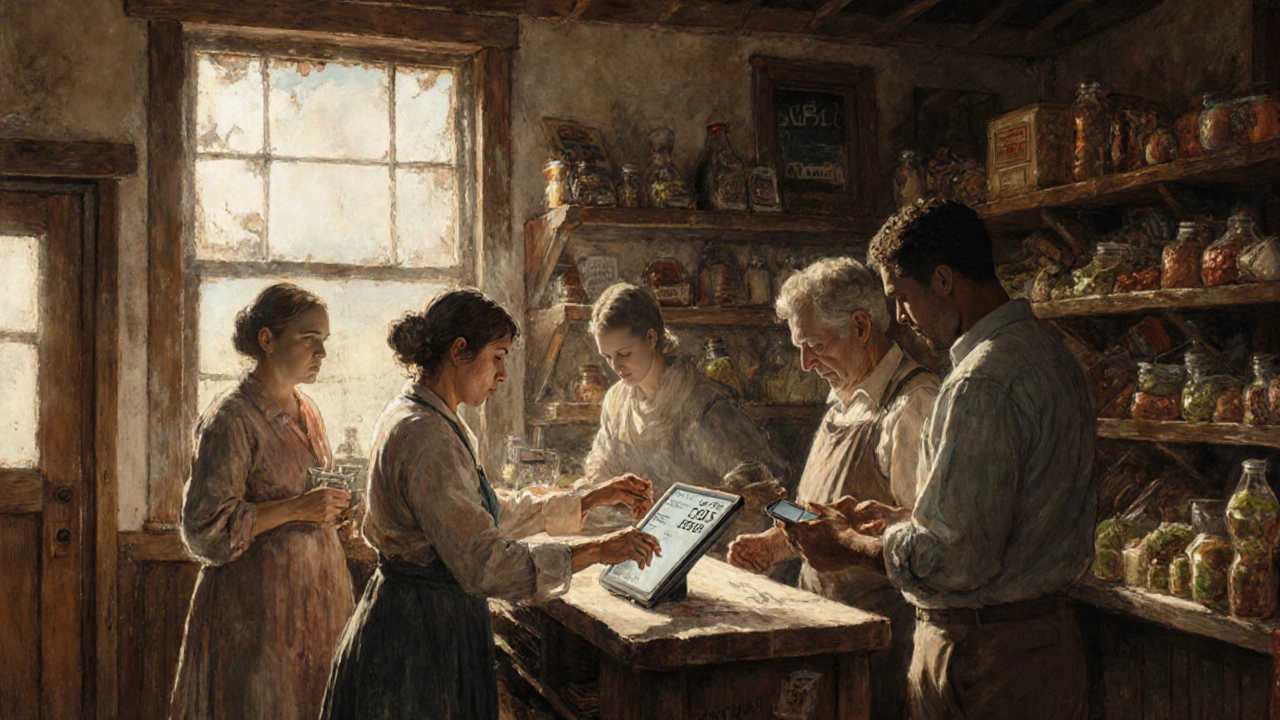
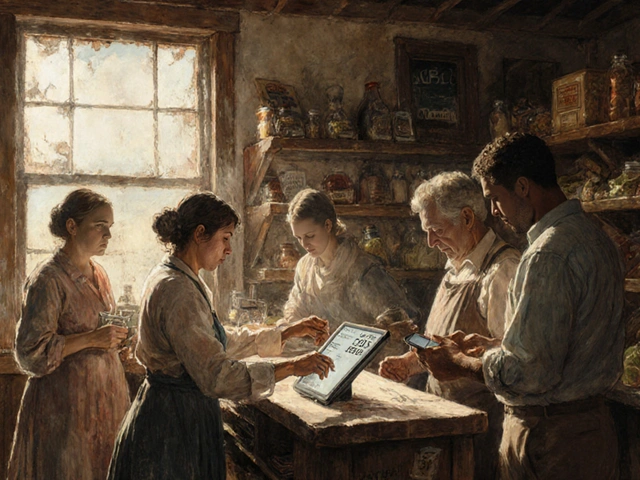
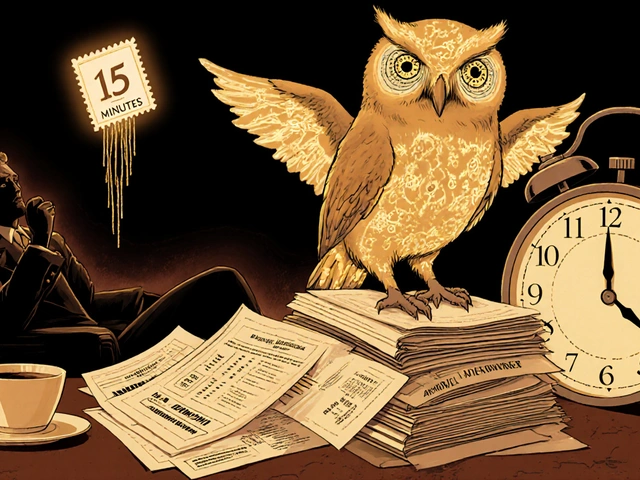
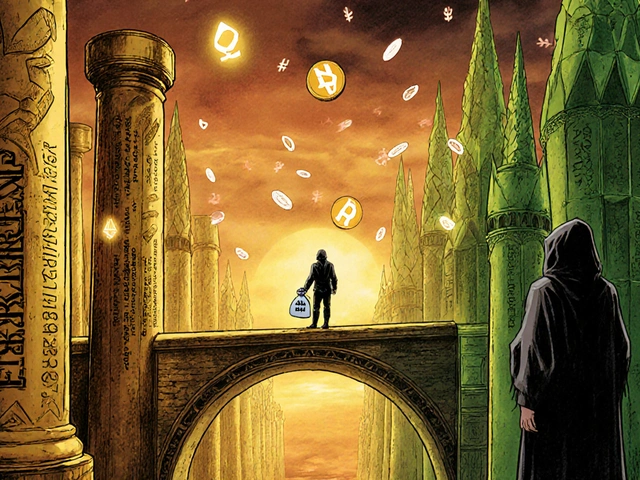
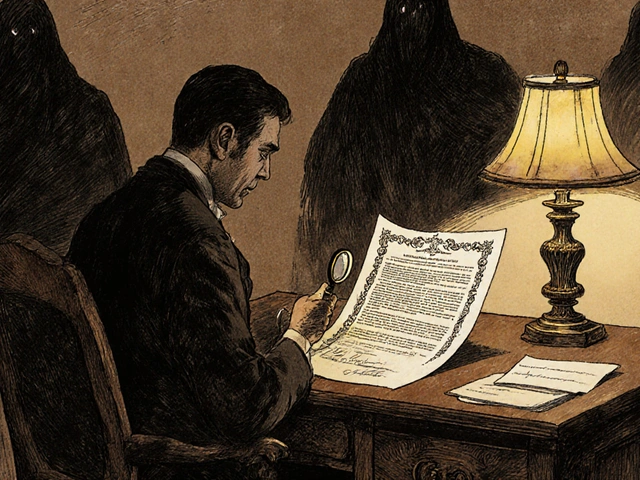

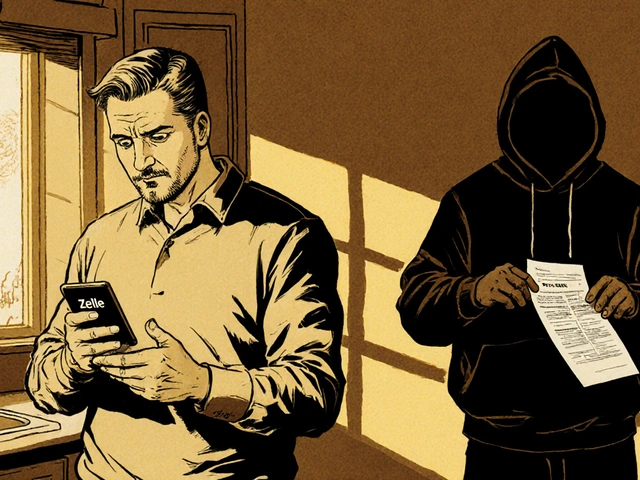
Comments
RAHUL KUSHWAHA
November 15, 2025This is so real for my uncle back in Bihar-he loads money onto a phone via a local kirana shop, then sends it to my cousin in Dubai. No bank, no paperwork, just ₹500 cash and a thumbs-up. Feels like magic, but it’s just smart. 💯
Julia Czinna
November 17, 2025I work with underbanked families in rural Mississippi, and this post nails it. The 3.8% fee? It’s not a rip-off-it’s the price of dignity. One mom told me, 'I’d rather pay $4 to send my kid’s school fee than wait two weeks for a check to clear.' That’s not finance. That’s survival with grace.
And yes, the cash-in/cash-out networks are the unsung heroes. Walmart, 7-Eleven, local pharmacies-they’re the new banks. We just don’t call them that yet.
Laura W
November 17, 2025OMG YES. I’ve been using PayNearMe to pay my rent since I got kicked out of my bank account after a mix-up with overdrafts. No more 'we can’t process your payment' emails. Just walk into CVS, hand over cash, and boom-rent’s paid. It’s like digital cash but with receipts.
And don’t even get me started on how my cousin in Detroit uses M-Pesa to send money to her mom in Jamaica. $2 vs $45? That’s not savings-that’s freedom. Banks are still stuck in the 90s while the unbanked are running on Web3 vibes.
Also-OPERA chips? That’s the future. No internet? No problem. Just tap and go. I want one. Like, now.
Graeme C
November 18, 2025Let’s be brutally honest: banks don’t care about the unbanked because they’re not profitable. They’d rather sell you a $35 overdraft fee than help you pay your rent. The fact that a corner store clerk in Alabama can load $100 onto a phone while your Chase app says 'account suspended' is a national disgrace.
And don’t pretend PayPal is the answer-it still needs your bank. That’s not inclusion, that’s gatekeeping with a better UI. True financial inclusion means cash-in, cash-out, no ID, no credit check, no corporate middlemen. That’s what M-Pesa did. That’s what we need here.
CBDCs? Fine. But if they require a government-issued ID or a smartphone with biometrics, they’re just the same system with a new logo. The real innovation is in the local agent with a tablet and a smile-not in blockchain or central banks.
Astha Mishra
November 20, 2025It is fascinating, isn’t it, how human ingenuity constructs systems of exchange precisely where formal institutions have failed-not out of rebellion, but out of necessity? We speak of financial inclusion as if it were a policy goal, yet the most profound examples of inclusion emerge organically, quietly, from the margins-where a grandmother in rural Alabama learns to say 'load twenty' to her grandson at the gas station, and suddenly, her world expands beyond the reach of bureaucracy.
The irony, of course, is that these systems, though born of exclusion, are more human than the banks that rejected them. They are built on trust-not algorithms, not credit scores, but the quiet integrity of a shopkeeper who remembers your name and never shortchanges you. And perhaps that is the true currency: not dollars, not tokens, but the assurance that someone will meet you halfway.
Even OPERA’s hardware tokens, though experimental, remind us that technology need not be complex to be profound. A single-use chip, a Bluetooth handshake, a transaction that lives and dies without a server-this is not science fiction. It is poetry made practical.
And yet, we must not romanticize. Risk remains. Vulnerability persists. There is no FDIC for the invisible economy. But perhaps the answer is not to bring them into our system, but to learn from theirs-to rebuild our institutions with humility, not hierarchy.
For the first time in decades, the unbanked are not waiting for permission. They are building. And if we listen-not as saviors, but as students-we might yet learn how to be human again in the economy we claim to serve.
Write a comment